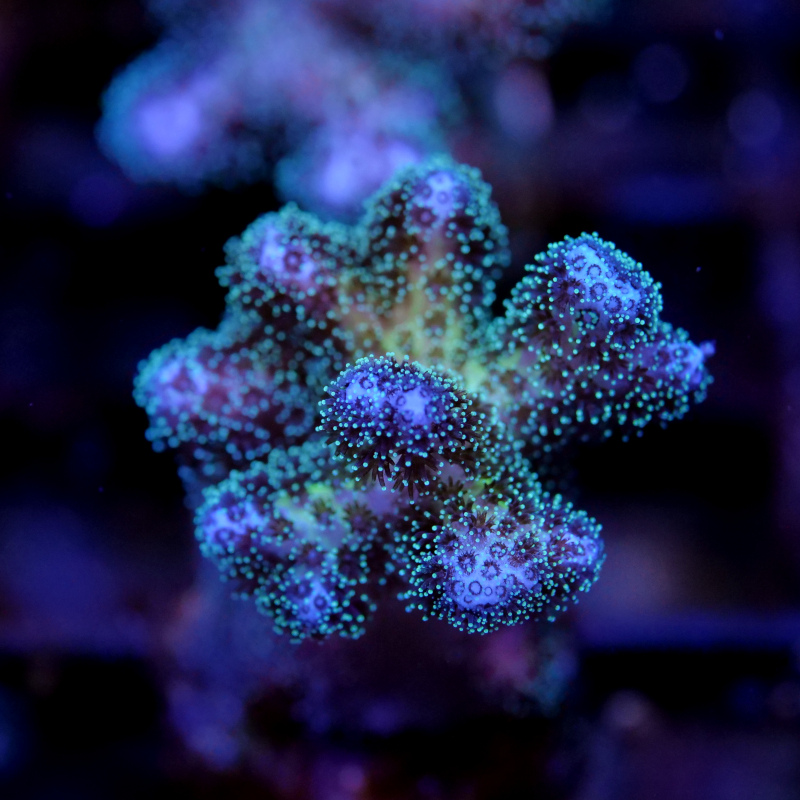SPS CORAL FOR BEGINNERS

SPS corals (SPS = Small Polyp Stony Corals) are extremely popular in marine aquariums. With their typically branched growth forms, they embody exactly the image that most of us have in our heads when we think of a coral.
Compared to other species, the care of SPS corals is a little more complex. The most important requirement, however, is that you regularly check your water values and are able to keep them as stable as possible.
But believe it or not: even among the SPS you will find some "easy" species that are ideal for getting started in reef aquarium keeping.
We present you 5 easy-to-care-for SPS corals:
#1 Montipora digitata
Montipora digitata has a branched growth form and comes in a wide variety of colors. It needs strong lighting and a strong current for rapid growth. A lack of trace elements can lead to the colors fading.
Montipora digitata , here in red, is one of the more robust SPS corals
#2 Pocillopora sylvatica
Pocillopora damicornis is a very grateful pet. The coloration depends heavily on the type of lighting used and the nutrient concentration and can vary considerably. This makes Pocillopora also a good indicator when the conditions in the aquarium have changed.

Fluorescence and colours may vary in Pocillopora damicornis depending on the keeping conditions
#3 Seriatopora hystrix
Seriatopora hystrix is a very good choice for beginners in marine aquariums. Handle this coral with care, as it has extremely delicate branches that can easily break off if touched. S. hystrix comes in many different colors such as green or pink. Medium lighting and medium flow intensity are sufficient to keep this species in a reef aquarium.
Pointed, thin branches characterize the Seriatopora hystrix
#4 Stylophora pistillata
Stylophora pistillata is one of the more demanding species of SPS corals that are easier to care for. It requires strong lighting and a strong current. In addition, the nutrient concentrations in your tank should not be too high, otherwise S. pistillata will lose its natural color (pink to violet) and may turn brown.
Due to its purple-white coloring, this Stylophora pistillata is nicknamed 'Milka'
#5 Seriatopora guttatus
Seriatopora guttatus is also well suited for entry into reef aquarium keeping. It is extremely robust against slight fluctuations in water parameters. The algae phase in your tank should, however, be over, because slime and filamentous algae cause great problems for S.guttatus .
Also a very popular beginner SPS: Seriatopora guttatus
With these 5 species, you have already gotten to know a few suitable candidates for starting with SPS. After putting the animals in your aquarium, pay more attention to the carbonate hardness (optimal: 7 - 8°dH) and keep an eye on the nutrient values (phosphate: 0.03 - 0.05 mg/l; nitrate: 1 - 5 mg/l). Have fun with your first SPS corals!



.JPG)
.JPG)






